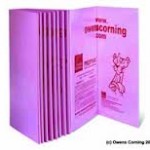This week the PBG answers reader questions about a post frame addition to a house, a combo business/residential building, and use of a vapor barrier.
DEAR POLE BARN GURU: We bought an older ranch house with a poorly done addition in the back. Since this dream property came with a house that prevents me building my dream barndominium, what are your thoughts on replacing this addition with a post beam constructed addition? if we pour a slab for the floor there would be about 2 or 3 steps down to the new room. it would allow for ground level indoor/ outdoor living, higher ceilings than the rest of the ranch, and give me just a bit of the open living space with exposed trusses that I’ve dreamed of. Carolyn
DEAR CAROLYN: Fully engineered post frame additions work well with pretty much any existing structural system. You also are not obligated to use steel roofing and siding, so it can be designed to match with your home. Another advantage is – you can do this sort of work yourselves, without having to hire it done!
 DEAR POLE BARN GURU: Combination business and residential? Square footage of 7000. Can it be done? KEVIN in FLORISSANT
DEAR POLE BARN GURU: Combination business and residential? Square footage of 7000. Can it be done? KEVIN in FLORISSANT
DEAR KEVIN: Interesting timing, as I was just going through some old family photos this week and found one of my grandfather in their grocery store from the 1930’s. My mother and grandparents lived upstairs from this store.
As for modern day combination business and residential, it can certainly be done using a fully engineered post frame building. Depending upon use classification of your business, it is likely you will be required to have at least a one hour fire separation between these dissimilar uses (really not any major thing – just a consideration).
DEAR POLE BARN GURU: Hello, I have a 24x50x8 pole building, concrete floor, and all metal is screwed directly to the wood framing. The purlins are spaced 2′ OC between the trusses, and I have 3.5″ closed cell rigid foam board to install between the 2×4 purlins. For the walls I have 1.5″ closed cell rigid board to install between the girts.
On the underside of the purlins after the closed cell rigid insulation is installed, I intend to install metal panels from the ridge to the walls. So, outside to inside it will be the following: Roof metal, then 2×4 purlins with 3.5″ rigid closed cell foam board in between, then metal panels installed on the interior. I will not have anything on the bottom chord of the trusses.
 On the walls I plan to cut-to-fit the 1.5″ closed cell rigid foam board and install between the girts. After foam board is installed I intend to line all interior walls with painted OSB.
On the walls I plan to cut-to-fit the 1.5″ closed cell rigid foam board and install between the girts. After foam board is installed I intend to line all interior walls with painted OSB.
Question: based on the above, can I use vapor barrier (or plastic) between the interior metal and the 3.5″ foam board, and extend the vapor barrier down the walls between the foam board and the OSB? Or do you have another recommendation? COREY IN COULTERVILLE
DEAR COREY: You are far more ambitious than me, to cut and fit all those insulation boards to fit between purlins and girts. As it will be impossible to perfectly seal all of those joints between insulation and framing, it would be a good idea to install a well-sealed vapor barrier between insulation boards and steel liner panels. Keep in mind, you may end up with some humidity issues inside of your building (especially if there is no vapor barrier under your concrete floor), so you may need to have some sort of mechanical dehumidification.






